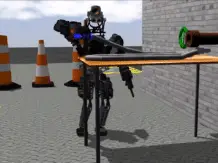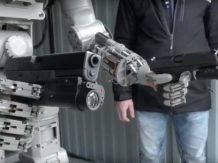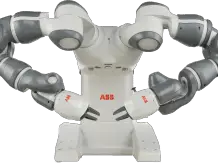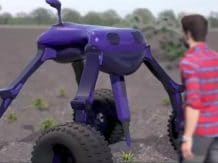A gecko, for example, jumping from one branch to a tree, looks as if it is “looking for a tumor”. However, in reality, the moment these reptiles hit the stump with their heads is crucial for the maintenance of trees, so scientists have created a new agile robot based on their movements.
Responding to how the geckos land could bring improvement in a plot of other robots
The team included four specialists whose joint effort was published in the journal Communications Biology. First, one of them made and analyzed in slow motion a number of videos in which the species Hemidactylus platyurus, or Asian flat-tailed gecko, jumps from trunk to trunk.
Also read: Fast, almost as light. SpaceX’s new Starlink satellites will benefit from lasers
Although the animals usually avoided landings in which the first strike was taken by their head, they did so whenever they reached a speed of about 6 meters per second in the air. Back then, the pattern was always the same – their upper torso bounced off the tree, making them stick to the trunk only with their hind legs… and with a tail that was pressed against the trunk by the impetus. Thanks to him, the gecko did not finally fall off.
Also read: The semi-automatic Kiwibot robots are great at delivering food
Scientists recreated exactly the same mechanism in the proprietary “robotic gecko”, that is, a 3D-printed “soft robot”. They equipped it with four Velcro-covered feet, a tail and an internal motorized tendon that was automatically activated to press down on the tail when the front legs hit the surface of the simulated trunk.
The aforementioned Velcro on the paws were of key importance for this robot, as it was fired at a piece covered with felt, which imitated the natural grip of geckos’ paws. However, these were not enough to stay on the tree, because after removing the tail, the success rate dropped from 55% to 15%, while in the natural environment, the effectiveness was 87%. Conclusions? Let’s give the floor to one of the scientists:
Also read: The largest helicopter in the world was completely useless, i.e. the Mi-12
Thanks to the robot, we were able to measure something that we couldn’t measure with geckos in the field. The wall reaction forces during the impact after landing confirmed that the tail is an essential part of facilitating landing […]. Our soft robot […] can also help improve locomotion [innych – dop. red] robots by increasing [ich] physical capabilities and simplification of control.
– explains Dr. Ardian Jusufi from Max Planck Research School for Intelligent Systems.
Want to stay up to date with WhatsNext? Follow us on Google News















